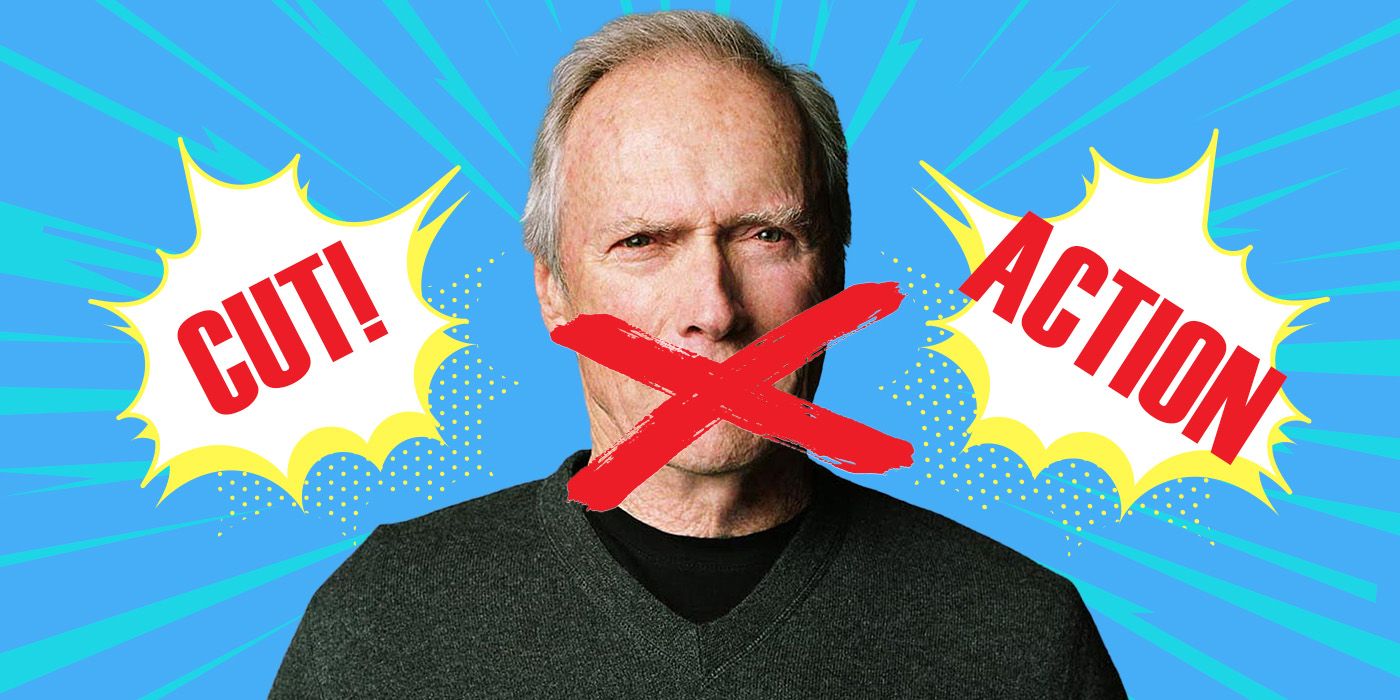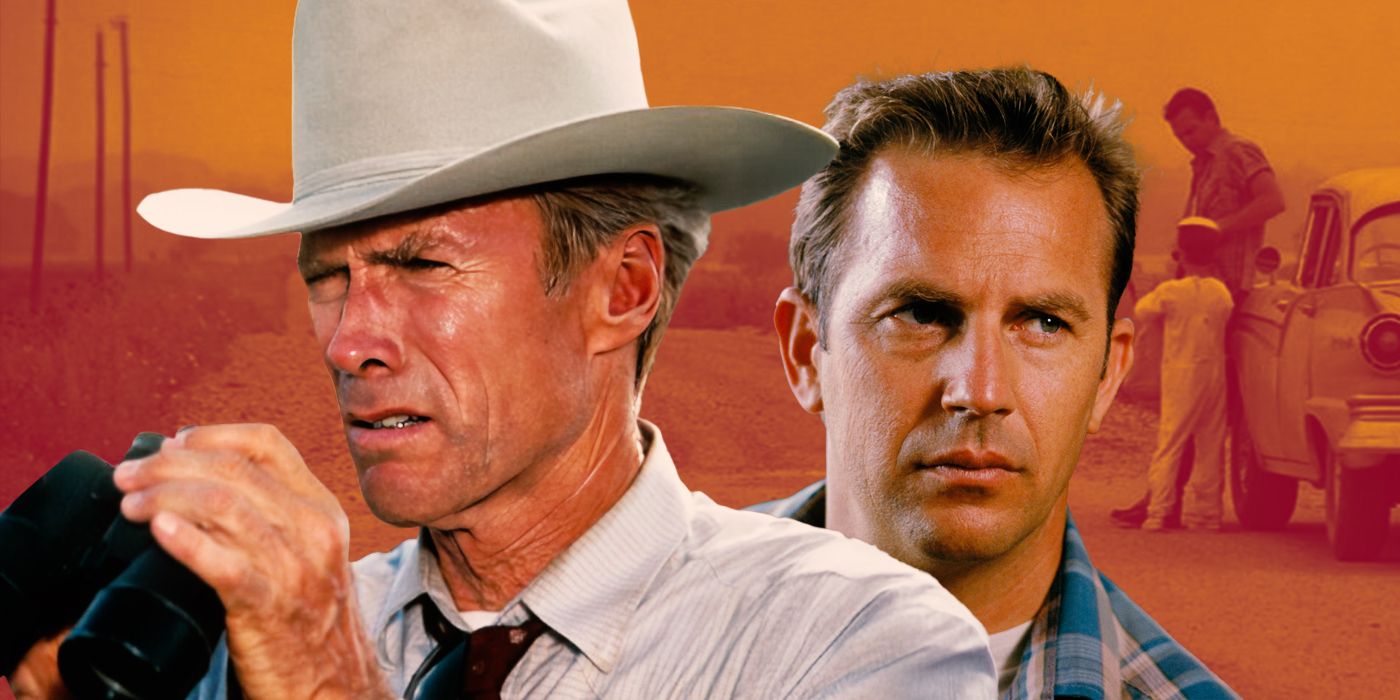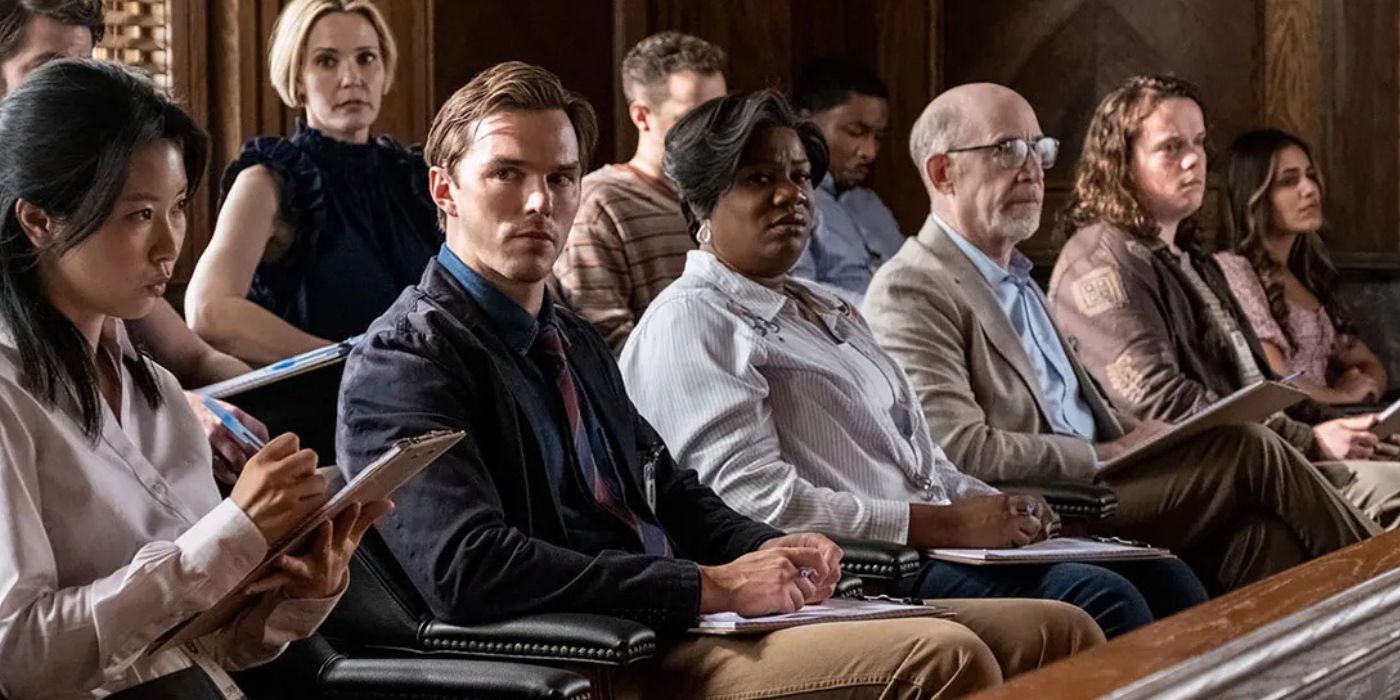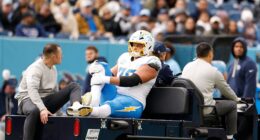The longevity of Clint Eastwood‘s career defies logic. No one in their right mind would predict that a major movie star from the 1960s would keep working in the 2020s and remain culturally relevant. Yet, here we are, a nonagenarian Eastwood just released another film as director in November, the probing legal thriller Juror No. 2. Looking back on the last 50 years of Eastwood’s career is a disservice to his filmography, as many of his finest films go back 60 years, notably the spiritual trilogy of spaghetti Westerns by Sergio Leone that began with A Fistful of Dollars in 1964. During the ’60s, before Eastwood emerged as a megastar in America thanks to his portrayal of Harry Callahan in Dirty Harry, the actor was prominent as steely, battle-tested soldiers in historical man-on-a-mission war epics. In the 1968 World War II adventure epic Where Eagles Dare, Eastwood, playing second fiddle to Richard Burton, perfected his familiar screen archetype.
Juror #2, allegedly Clint Eastwood’s cinematic swan song (although you can never truly rule anything out), is now available to rent on VOD and will hit Max on December 20th. Despite being limited in visual flair and sheer spectacle, the film played remarkably well with a live audience, and the emotional scope of a story about a juror discovering that he was responsible for the murder that he is deliberating on is best enhanced on the big screen. Unfortunately, Warner Bros., the studio behind Where Eagles Dare and nearly every Eastwood film for 60 years, unceremoniously dumped the film into a mere 50 theaters nationwide. In a cruel twist of fate, Eastwood’s film about diagnosing the failure of the judicial system in the United States was unfairly railroaded by its studio despite being an inherently satisfying and crowd-pleasing mid-budget drama that we all crave in this day and age.
‘Where Eagles Dare’ Is a Grand Epic Set Amid an Allied Conflict in World War II
Before taking his talents as a Western outlaw to the big screen in the United States, Eastwood made a pair of WWII movies, both directed by Brian G. Hutton. One was Kelly’s Heroes, a comedic caper with a deep ensemble cast featuring Donald Sutherland, Caroll O’Connor, and Don Rickles. Two years prior saw the release of Where Eagles Dare, a gritty and deadly-serious men-on-a-mission epic about British allied forces staging a dangerous raid on a Nazi base holding an American general prisoner. Leading this crack commando team to rescue the general, George Carnaby (Robert Beatty), is Major Jonathan Smith (Burton). On his team is the mute but menacing American Lieutenant Morris Schaffer (Eastwood), puzzled by his assignment on a British squad. This war-action epic gradually becomes a cunning espionage thriller, as Smith’s mission has a secret objective. Another spy, Mary Ellison (Mary Ure), is dropped into the mission without anyone’s knowledge besides Smith’s.
Where Eagles Dare‘s astonishing craft is evocative of a time when movies felt larger than life. Even movies not categorized as epics were grand and impressive in their scope and spectacle. Thanks to the sweeping imagery created by Panavision cinematography, you can practically see the blood, sweat, and tears dripping off the mammoth production of the enemy castle, the immaculate costuming of the officer uniforms, and the immersive sound design of the bullets and explosives. The film is wholly austere without a lick of irony or winking. With other WWII-adjacent movies like The Great Escape and The Dirty Dozen, Hollywood reminded audiences that war and conflict overseas were once a noble cause. Released amid the Vietnam War as tensions flared on the domestic front, the dignified appearance of the military and their mission exists as a counter to the rampant anti-war protests in America at the time.
Clint Eastwood Plays Off of Richard Burton’s Star Power in ‘Where Eagles Dare’
Clint Eastwood plays an extension of the Man With No Name in the Sergio Leone “Dollars” Westerns. Lt. Schaffer is part of a squad, but he carries himself like a lone ranger, with his intense body language suggesting that he’ll start firing away at any moment. He lets the suave British Major Smith do the talking, as he can express all his menace through his iconic squinted eyes. The role as the stern, trigger-happy lieutenant is perhaps the closest he has come to portraying The Terminator. Being the lone American soldier, Schaffer carries himself like an outlaw all by his lonesome, which is familiar territory for Eastwood, to say the least. Fast-forward a handful of years later, it would’ve been unfeasible for Eastwood to play an underdog with his back against the wall. As a relatively young star, he captures a sense of distrust stemming from the tight-lipped confidentiality of this rescue mission. Schaffer knows something is sketchy about this scheme, and he is fully expected to be double-crossed.
2:45

Related
VIDEO: Why Clint Eastwood Refuses to Yell “Action” or “Cut” When Directing
According to Tom Hanks, the acclaimed director treats his actors like… horses?
Where Eagles Dare is a rare film in Eastwood’s filmography, as he is second billed behind Richard Burton, a more prominent star at the time. The plot and deliberate pacing of the film runs through Burton delivering exposition and negotiating with the opposition. The two stars were perfect foils for each other, with Burton as the loquacious, Shakespearean thespian who complements Eastwood’s naturalistic reticence. Burton’s dignified gravitas allows Eastwood to act as a raw and unfettered presence that he is usually deprived of as the dominant central figure in all his films. Whenever Eastwood worked off another actor of his pedigree, such as Meryl Streep in The Bridges of Madison County, his dramatic chops shined. With Burton, he uses his relative youth to underline the frustration of being restrained from blowing away every Nazi on the screen, as the wise and methodical Smith has something sneaky up his sleeve.
‘Where Eagles Dare’ Represents a Turning Point for War Films and Clint Eastwood
Where Eagles Dare represents an inflection point in cinema and the prolific career of Clint Eastwood. The Brian G. Hutton film leans into the familiar tropes of man-on-a-mission epics of the past, including The Guns of Navarone and The Dirty Dozen, notably a sense of grandeur, austerity, and loose allegorical connections to contemporary international military conflicts. This crop of war films never actively shined a light on the divisiveness of the Vietnam War, but their aggression in the depiction of combat and battle-fatigued soldiers reflected the malaise of American culture. The dialogue and plot-heavy nature of this intense war epic will leave some modern viewers perplexed, but Where Eagles Dare is far more punishing and brutal with its violence than any man-on-a-mission film prior. With the likes of Sam Peckinpah entering mainstream cinema at the turn of the decade, unflinching violence became the norm in cinema, and Where Eagles Dare signaled a changing of the tides.
For Eastwood, Where Eagles Dare set the legendary star on a 50-year-long career confronting violence and reflecting on its aftershocks. While it isn’t as meditative as Unforgiven or A Perfect World, the struggle between military diplomacy and the urge to shoot first and ask questions later is powerfully underlined in this film. The shotgun blast of grittiness displayed in Where Eagles Dare paved the way for Don Siegel’s white-knuckle direction of Dirty Harry, a film so punishing that it taps into the no-holds-barred attitude of Harry Callahan.
‘Juror #2’ Continues Clint Eastwood’s Probing of Institutions
Throughout his career, Eastwood explored various well-established institutions in the U.S. and across the globe, from the justice system in his Westerns, the music industry in Bird, the Oval Office in Absolute Power, NASA in Space Cowboys, the military in American Sniper, and the media in Richard Jewell. As he aged, his direction became more and more skeptical of these institutions and our public trust in them. Eastwood’s latest film, about a juror, Justin Kemp (Nicholas Hoult), wrestling with his conscience over whether to reveal that he involuntarily killed the young woman at the center of a murder trial, distills a trial system down to a morality fable. Despite the legal system’s extensive procedures, background checking, and stalwart tradition, it fails to serve justice for the victims of the case. The trial in Juror #2 is not bound to facts and evidence, but instead, moral justification and character assessment. Because Justin believes he is reformed (much like Eastwood’s fraudulently reformed vengeful bounty hunter, William Munny in Unforgiven), he talks himself into not disclosing his secret at the expense of the wrongfully convicted defendant.
Eastwood’s longevity as an actor and filmmaker is also evident in his wide range of periods captured on screen. Where Eagles Dare, with its dark interiors and chilly exteriors on the terrain of the battlefield, evokes the duplicity of backroom dealings by officers and the danger of combat in World War II through impressive Hollywood spectacle. As a director, Eastwood is a minimalist visual storyteller, focusing on gripping character dynamics and scintillating performance work.

Related
Clint Eastwood Only Starred in This 1993 Thriller Because Kevin Costner Rewrote It
Kevin Costner had other plans for the ‘Unforgiven’ star.
At 93 years old, Eastwood, through his usual sturdy hand as director, crafted an essential film that speaks to the present day. Where many acclaimed filmmakers are hesitant to make contemporary films due to the omnipresence of smartphones, Eastwood leans into the digital age by having text messages play an integral part of the film’s dramatic crux. From a textual perspective, Juror #2 highlights the prevailing isolationism and self-interest of everyday people in America in 2024. For Justin and his very pregnant wife, Alison (Zoey Deutch), jury duty hinders their personal lives, and they hope to accomplish their goal as expediently as possible. For most of the jurors, the trial is an inconvenience, and they all long to retreat to their usual lives and focus on their self-interests. The film taps into the suffocating, often dehumanizing nature of the jury system that forces people to block out any judgment from the rest of the world and be subservient to the institutional framework. In the end, however, the jury fails to gather all the evidence and dig further into the quandaries surrounding the case, which leads to a guilty sentence for the defendant because they disapprove of his character.
Although he didn’t direct the 1968 man-on-a-mission WWII epic, Where Eagles Dare serves as a perfect dichotomy to Juror #2 when analyzing the prolific and remarkable career of Clint Eastwood. These two films, released 56 years apart from each other and polar opposites in terms of scope, illustrate Eastwood’s versatility. Where Eagles Dare and Juror #2, a war epic and a courtroom drama, are pastiche genres that rarely see wide releases today, but as an actor and director, he invigorates them with the right amount of personal touch and contemplative diagnosis of lofty themes such as war politics and justice.
Clint Eastwood Shoots First and Asks Questions Later in ‘Where Eagles Dare’
Despite being sold as a wall-to-wall action epic set amid a treacherous military rescue, Where Eagles Dare is intensely plotted and methodically paced to the point of a slow burn. Throw in the spy element into the mix, and this convoluted plot only becomes more hazy, as we discover that Major Smith is a German spy, to then reveal that his German identity was only a ruse to infiltrate the Nazi command. Officers in the British squad are shown to be moles working against Allied forces, when the film reveals that General Carnaby’s capture (ostensibly the MacGuffin for the movie) was staged in order to penetrate the Nazi intelligence agency and identify the German moles. When this twist is disclosed, the rug is swept out from under the viewer, causing already-confused viewers to be checked out throughout the remaining runtime. The onslaught of twists and turns must have left an impact on Quentin Tarantino, whose own men-on-a-mission WWII epic, Inglourious Basterds, features a litany of double-crossing between Allied forces and Nazis. The underground bar stand-off in Basterds operates like a heightened version of every confrontation in Where Eagles Dare.
In a conversation with Derren Nesbit, who plays German officer Major Von Hapen, the actor shared that Eastwood requested that he be given fewer lines of dialogue. These lines were allocated to Richard Burton, which helped create the polarization between the smooth-talking Major Smith and the gun-blazing Lieutenant Schaffer. Clint Eastwood, who also truncated his dialogue in A Fistful of Dollars, shrewdly recognized his strengths at the outset of his movie star career. For the next 50 years, Eastwood developed a keen understanding of his screen persona. He was born to stand out from the pack of leading men who play courageous soldiers and expert gunfighters. While the majority of Where Eagles Dare consists of compelling but relentless exposition and combat strategy, Eastwood’s stillness draws the viewer’s eye, and his thirst for wiping out hostile forces simmers throughout the film. When Brian Hutton finally lets this war epic unleash, it is Eastwood’s Lt. Schaffer who delivers the carnage. As his co-star, Eli Wallach, argues in the Western The Good, The Bad, and The Ugly: when you have to shoot, shoot, don’t talk.
Where Eagles Dare is available to rent on Prime Video in the U.S.
Rent on Prime Video












